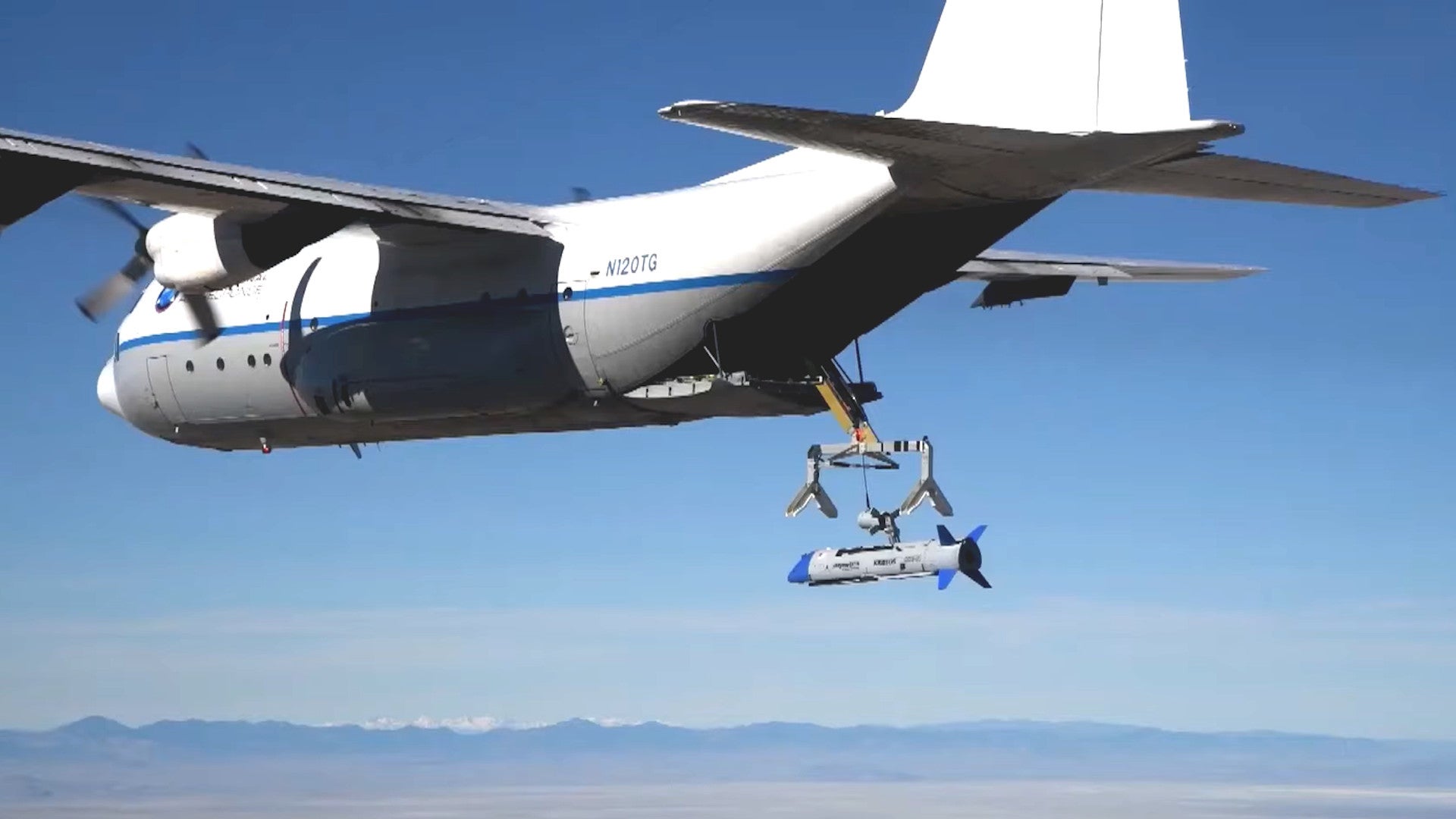The Defense Advanced Research Projects Agency says a specially equipped C-130 Hercules cargo plane successfully recovered an X-61A Gremlins drone in mid-air last month. That round of testing also saw two X-61As flying together and showed that one of the drones could be refurbished and launched on a second mission within 24 hours of its first one. These are all key capabilities that the Gremlins program has been working to demonstrate, as you can read more about in The War Zone‘s past reporting here.
It is not entirely clear when or where exactly this rounding of testing took place, according to a Defense Advanced Research Projects Agency’s (DARPA) press release issued today. DARPA did say that two X-61As, also known a Gremlin Air Vehicles (GAV) were used in the tests and that they “successfully validated all autonomous formation flying positions and safety features before” one was recovered in flight. The GAVs are also capable of safely descending down to the ground after a flight using an internal parachute recovery system.

“This recovery was the culmination of years of hard work and demonstrates the feasibility of safe, reliable airborne recovery,” Air Force Lieutenant Colonel Paul Calhoun, the Gremlins program manager within DARPA’s Tactical Technology Office (TTO), said in a statement. “Such a capability will likely prove to be critical for future distributed air operations.”
DARPA failed to demonstrate this aerial recovery capability in testing last year. Then-Gremlins program manager Scott Wierzbanowski said “we came within inches of connection on each attempt” at the time.
“Airborne recovery is complex,” Calhoun added about this new round of testing. “We will take some time to enjoy the success of this deployment, then get back to work further analyzing the data and determining next steps for the Gremlins technology.”
The Gremlins program has been ongoing since 2015. DARPA selected a team led by defense contractor Dynetics, now a subsidiary of Leidos, to actually build and demonstrate the GAVs in 2018. Drone maker Kratos developed both the X-61A drone itself and the aerial recovery system.

This successful aerial recovery is an important milestone in the program, which has long been seen as an important stepping stone to exciting future unmanned capabilities for the U.S. military, including low-cost, networked drone swarms operating with a high degree of autonomy. DARPA has previously described swarming enemy air defenses as one notional mission set for operational drones derived from the X-61A and its mothership concept.
By their nature, swarms present challenges for all kinds of defenders, being able to present threats across a relatively broad area and approach from multiple vectors at once, overwhelming opponents in the process. Individual drones inside a swarm can also be loaded with various different payloads, including various kinds of sensors, electronic warfare suites, directed energy weapons, or small warheads, to increase the flexibility of the entire group.

Being able to recover and refurbish any drones that are not destroyed in a swarming attack offers operational benefits, including reducing the time it takes to launch another wave, and a way to help keep the costs to carry out these missions as low as possible. There are even discussions now about whether aircraft could recover drones from a swarm in flight after a mission and be able to get them ready to be launched again without having to land. Air launching drones from a mothership already provides a way to deliver simpler, cheaper designs closer to multiple intended target areas over great distances.
Aerial launch and recovery of unmanned aircraft, including from other drones, is an area of rapidly growing interest for the U.S. military, in general. General Atomics’ Sparrowhawk, which is also designed to be recovered in mid-air, is a prime example of another Gremlins-like design now in development.
With the recent successful recovery test, Gremlins has now demonstrated the general feasibility of this key concept, which opens up new and exciting possibilities going forward.
Contact the author: joe@thedrive.com
